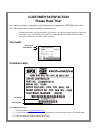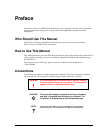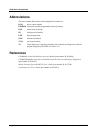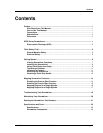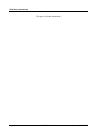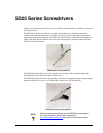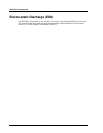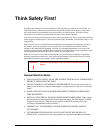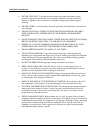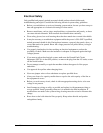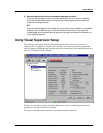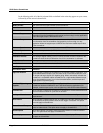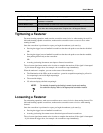
SD25 Series Screwdrivers
Page 4 T-40409-A 39-30-40409
• SECURE THE TOOL. Tools that develop torque can produce hazardous torque
reactions. Always be sure that the tool is properly fixtured to absorb reaction as a
fastener is tightened. Never operate a tool capable of high torque without proper
fixturing.
• SECURE WORK. Avoid situations where the part being fastened breaks loose and can
cause damage.
• NEVER TOUCH OR ATTEMPT TO STOP MOVING MACHINERY OR PARTS
WITH YOUR HANDS, OTHER PARTS OF YOUR BODY, OR MAKESHIFT
DEVICES.
• DO NOT OPERATE THE TOOL WHILE UNDER THE INFLUENCE OF ALCOHOL,
DRUGS OR MEDICATION THAT CAN IMPAIR YOUR JUDGMENT.
• REPORT ALL UNSAFE WORKING CONDITIONS OR PRACTICES TO YOUR
SUPERVISOR AND / OR SAFETY DEPARTMENT FOR CORRECTION.
• WEAR APPROVED SAFETY GLASSES AT ALL TIMES.
• DO NOT WEAR JEWELRY, especially bracelets and rings, while operating the
fastening tools. Keep hands and fingers away from all rotating parts and avoid situations
where clothing can become tangled in the tool. Secure loose fitting clothing, neckties,
and long hair. Wear medical alert identification cautiously.
• DO NOT OVERREACH. Keep proper footing and balance at all times.
• KEEP YOUR WORK AREA CLEAN. Do not work on or near slippery floors or
surfaces. Avoid situations where the tool reacts against unexpected obstacles. Do not
operate electrical equipment while standing on a wet floor.
• MAINTAIN TOOLS IN TOP CONDITION. Keep tools properly lubricated and clean.
If any wires become frayed or exposed, replace them immediately. Prevent dirt, grease
or contaminants from getting into the tool.
• REDUCE THE RISK OF UNINTENTIONAL STARTING. Be careful how the tool is
left unattended. Avoid resting it on its throttle/trigger lever to prevent false starts.
• CONTROL THE DIRECTION OF ROTATION. The reaction torque changes direction
when going from forward to reverse. Always be aware of the direction the tool will
rotate prior to using it. If the tool is not fixtured this will allow you to brace for the
proper direction of torque reaction.
• CHECK DAMAGED PARTS. Before further use of a tool, any part of the tool that is
damaged should be carefully checked to ensure that it will operate properly and perform
its intended function. Check for alignment of moving parts, breakage of parts, mounting,
and any other conditions that may affect its operation. Never operate a tool that has
damaged or exposed wires. Never operate a tool that has any part of the powertrain,
other than the output spindle, exposed.



